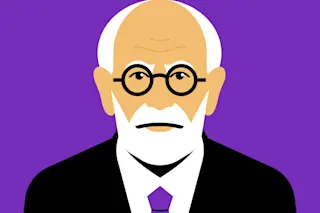This article was originally published on May 6, 2022.
When we tell our friends about a crazy dream we had about them, or when we use terms like ego and free association, we are referencing Sigmund Freud.
More than 80 years after his death, Freud’s theories about the human unconscious and how it affects our behavior, continue to pervade Western culture. Freud’s groundbreaking psychology theories, introduced to the world at the turn of the 20th century, changed the way we think about the human mind.
His theories have not only impacted psychological theory, but how we conduct ourselves in our daily lives, family lives and work lives.
Terms like dream analysis, free association, the Oedipus complex, the Freudian slip and the-ever present ego, as well as id and superego, are woven into so much of what we do, think and say.
We frequently talk about our dreams in modern society. ...














